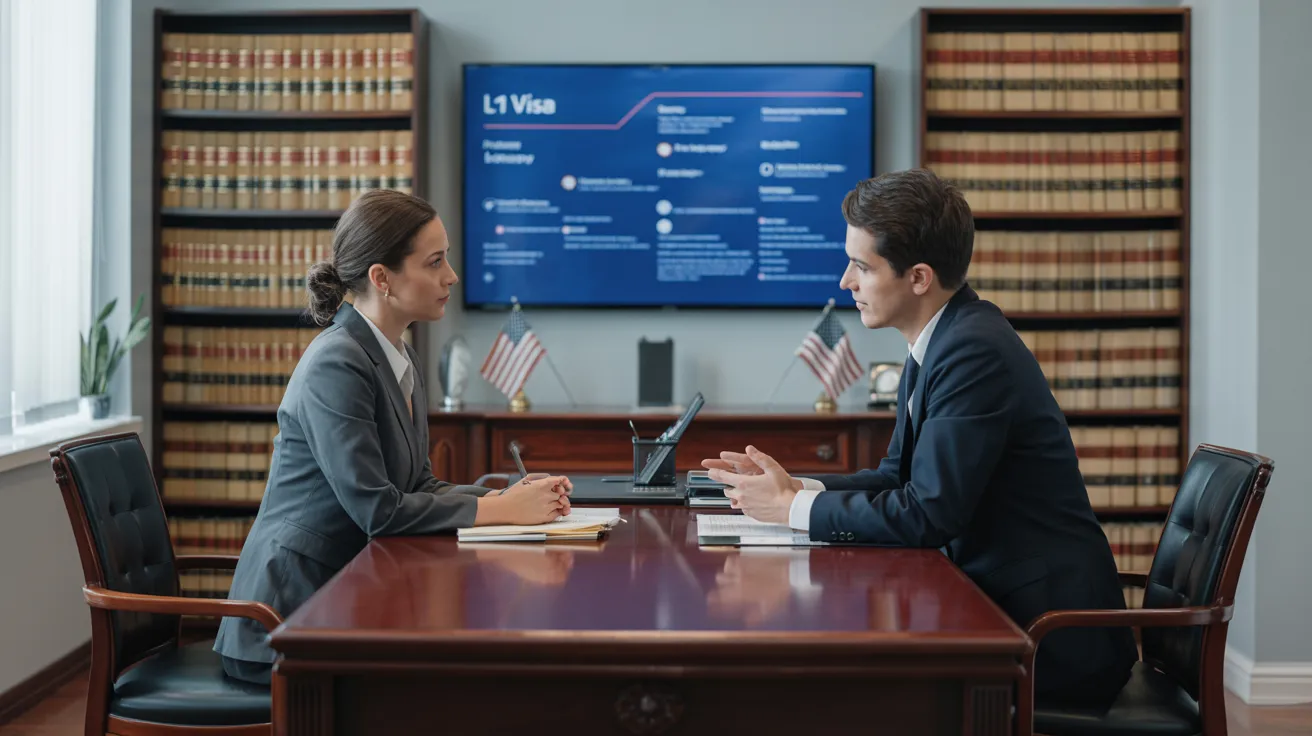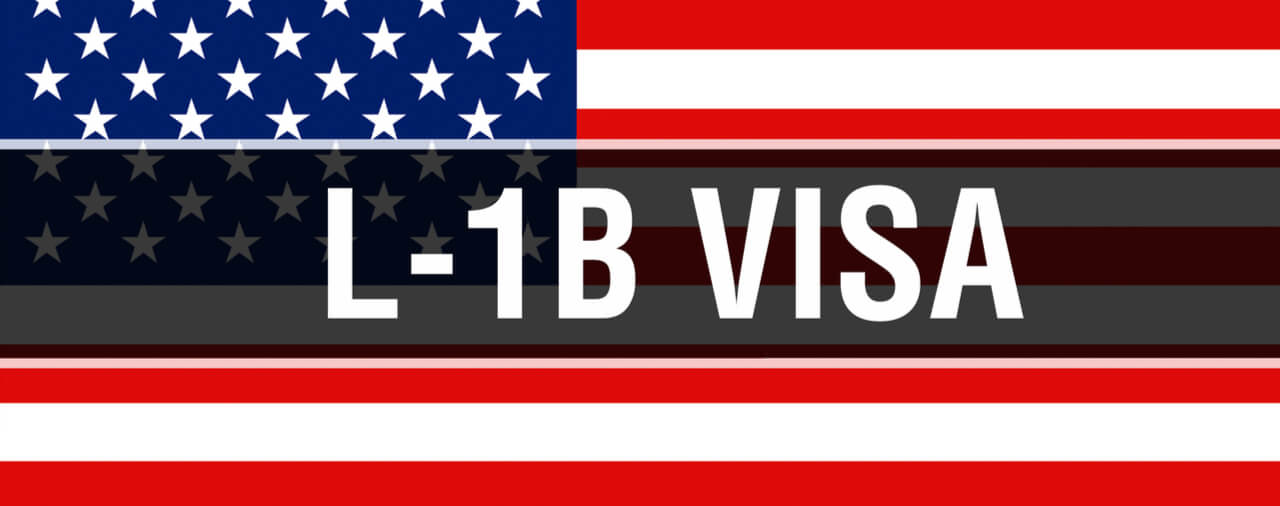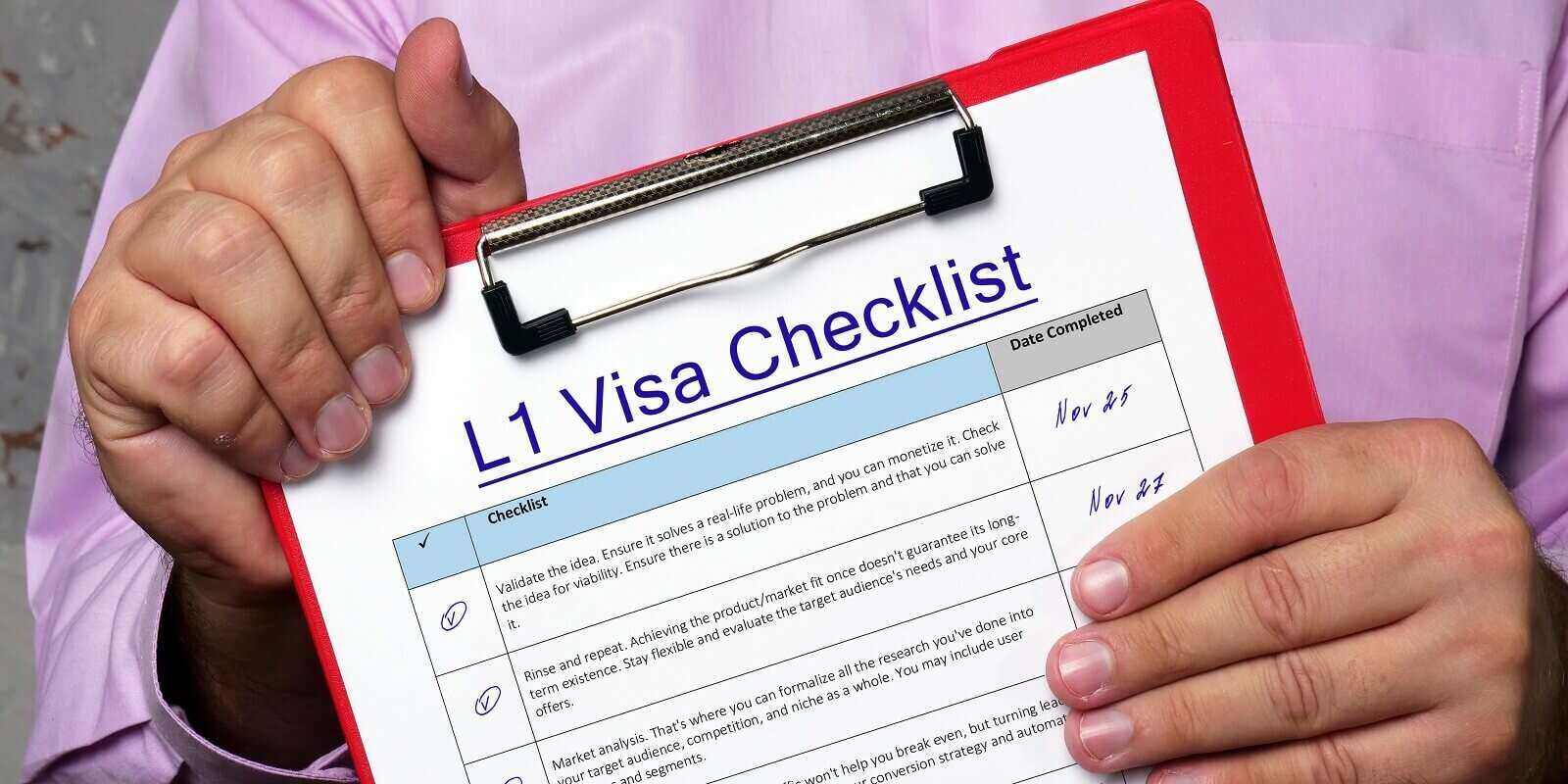Opening Opportunities: A Comprehensive Guide to the L1 Visa Process
The L1 visa procedure presents an important pathway for multinational companies looking for to move essential workers throughout boundaries. Comprehending the subtleties of qualification criteria, the differences between L-1A and L-1B visas, and the details of the application process can substantially impact an applicant's success. However, maneuvering this facility landscape is not without its obstacles, and mindful interest to documents and company sponsorship is important. As we check out the crucial parts of this procedure, the techniques for overcoming prospective barriers will end up being obvious, exposing how notified preparation can open a globe of opportunities.
Comprehending the L1 Visa
Understanding the L1 visa involves acknowledging its significance as an important tool for international firms seeking to transfer proficient staff members between worldwide offices. This non-immigrant visa group facilitates the activity of executives, supervisors, and specialized knowledge workers to the United States, consequently allowing organizations to maintain functional continuity and harness global skill efficiently. The L1 visa is separated right into two primary classifications: L-1A for supervisors and executives, and L-1B for employees possessing specialized knowledge.The L1 visa serves an important role in improving a company's competitive edge in the international industry. By enabling business to relocate their crucial workers, organizations can assure that critical jobs are handled by qualified individuals who are currently aware of the company's culture and operational procedures. L1 Visa. This interior transfer system not only promotes understanding sharing yet also advertises advancement and collaboration across borders.Moreover, the L1 visa is frequently favored for its fairly uncomplicated application process contrasted to various other visa classifications, as it enables double intent, permitting owners to go after permanent residency while on a short-lived job visa. This attribute makes the L1 visa specifically appealing for both employers and employees, as it improves the path for knowledgeable specialists to develop lasting residency in the USA
Eligibility Standards
Eligibility for the L1 visa depends upon numerous key criteria that ensure both the staff member and the company meet details credentials. This non-immigrant visa is created for international business to transfer workers from consular services to united state counterparts.Firstly, the employer should be a certifying organization, that includes a parent business, branch, affiliate, or subsidiary of an U.S. company. The company needs to have been doing service for at the very least one year both in the U.S. and abroad. This ensures that the business has sufficient functional stability and a legit presence.Secondly, the worker needs to hold a managerial, executive, or specialized expertise position. For L1A visas, the candidate must show managerial or executive credentials, while L1B visas concentrate on specialized expertise related to the company's products, solutions, or procedures. Furthermore, the worker must have helped the international entity for at the very least one continuous year within the last 3 years prior to their application.Lastly, the employee's duty in the U.S. must straighten with their previous position, making sure that their skills and proficiency are leveraged for the business's benefit.

Kinds of L1 Visas
The L1 visa category comprises 2 primary kinds designed to facilitate the transfer of employees within multinational companies: the L1A visa for managers and execs, and the L1B visa for employees with specialized understanding. Each kind serves distinctive functions and has certain eligibility criteria.The L1A visa is customized for individuals that hold managerial or executive settings within a business. This visa allows high-level staff members to move to an U.S. branch, subsidiary, or associate of the same organization. Applicants for the L1A visa should show that they have been used in a supervisory or executive capability for a minimum of one continual year within the past 3 years before their application. In addition, this visa offers a much longer duration of remain, at first granted for three years, with the possibility of expansions for up to seven years.In comparison, the L1B visa is meant for specialists with specialized expertise associated to the company's items, solutions, or procedures. To qualify, candidates have to verify that their experience is critical to the organization which they have actually helped at the very least one continual year within the last 3 years in a function that required this specialized understanding. The L1B visa is at first approved for 3 years, with expansions offered for up to five years.Both visa types are necessary for firms looking for to improve their international procedures by leveraging skilled employees, consequently advertising innovation and performance within the U.S. market.
Application Process
Guiding through the L1 copyright process involves a number of important steps that have to be diligently complied with to guarantee a successful result. The procedure begins with the U.S. employer, that have to initially develop eligibility by demonstrating a qualifying partnership with the international entity and validating that the worker satisfies the specific needs for the L1 visa category being sought.Once qualification is confirmed, the company launches the procedure by filing Type I-129, the Application for a Nonimmigrant Employee, with the U.S. Citizenship and Immigration Solutions (USCIS) This kind has to be accompanied by a thorough summary of the task obligations to be executed, the business framework of both the united state and international entities, and the staff member's certifications. It's essential to confirm that all info is exact and complete, as omissions or mistakes can result in delays or denials.Upon approval of the I-129 petition, the following action includes the employee using for the L1 visa at an U.S. embassy or consulate in their home country. This phase requires the conclusion of Kind DS-160, the Online Nonimmigrant copyright, and scheduling an interview. Throughout the interview, the candidate has to present evidence supporting their credentials and the employer's petition.After the visa is provided, the employee can go into the United States to function in the assigned duty. On the whole, careful preparation and adherence to every step of the application process are crucial for an effective L1 visa outcome.
Required Documents

Necessary Types Needed
Steering the L1 Visa procedure requires cautious focus to the essential types and documentation required for an effective application. The main type required is the Type I-129, Request for a Nonimmigrant Employee, which need to be finished and sent by the U.S. company (L1 Visa). This form lays out the details of the work deal and the qualifications of the staff member looking for the L1 Visa.Alongside Kind I-129, the applicant will need to complete Form I-539 if accompanying relative are likewise looking for visas. Additionally, the employer should provide evidence of the certifying partnership in between the U.S. entity and the foreign entity, commonly requiring the submission of business papers such as posts of incorporation or economic statements.Moreover, it is important to consist of the L Category Supplement to Type I-129, which defines the kind of L Visa being asked for-- either L-1A for supervisors and execs or L-1B for staff members with specialized understanding. Applicants should assure that all forms are authorized and dated appropriately, as insufficient entries can lead to delays or rejections. Appropriately setting up these important kinds lays the foundation for a smoother L1 copyright procedure
Sustaining Evidence Demands
Supporting documentation is necessary for an effective L1 copyright, as it confirms the insurance claims made in the petition. Applicants must offer a variety of papers to show eligibility for the visa, which is classified right into 2 main kinds: proof of the qualifying relationship in between the united state and foreign entities and proof of the applicant's qualifications.To establish the connection, applicants ought to send L1 Visa paperwork such as corporate business graphes, monetary statements, and proof of possession. These documents confirm that the foreign company has a certifying partnership with the U.S. employer, whether as a moms and dad business, subsidiary, branch, or affiliate.For the candidate's qualifications, essential files consist of an in-depth employment letter from the foreign company, laying out the applicant's work title, duties, and duration of employment. Furthermore, instructional qualifications, such as levels and diplomas, need to be provided to prove the candidate's know-how in the relevant area.
Company Sponsorship Papers
Company sponsorship papers play an essential role in the L1 copyright procedure, as they confirm the U.S. employer's dedication to the applicant's employment in the USA. These records are vital for demonstrating the employer's eligibility to sponsor the candidate for the L1 Visa.Key records usually needed consist of a detailed employment letter from the U.S. employer, which lays out the task title, obligations, and the nature of the employment partnership. Furthermore, the employer needs to offer proof of the firm's authenticity, such as service licenses, tax returns, and business charts, showing the connection in between the U.S. entity and the foreign company.Furthermore, proof of the worker's certifying partnership with the foreign firm is necessary. This might consist of documents confirming the worker's duty in the foreign entity, such as pay stubs, employment agreement, or performance analyses.
Typical Obstacles
Steering the L1 visa procedure presents several usual obstacles that applicants must be conscious of (L1 Visa). Trick concerns often include stringent paperwork demands, prospective hold-ups in processing times, and the need for strict legal compliance. Comprehending these barriers can aid applicants much better prepare and minimize dangers during their copyright trip
Documentation Needs
The L1 copyright process typically offers considerable obstacles associated to paperwork requirements. Applicants should supply considerable paperwork to develop eligibility, which can bring about confusion and possible delays. Trick files include proof of a certifying connection between the U.S. and international employer, proof of the applicant's employment history, and in-depth details about the work duty in the U.S.One usual difficulty is collecting adequate evidence to show the nature of the certifying partnership. Business commonly have a hard time to existing clear organizational graphes or financial declarations that illustrate the connection between the entities. Furthermore, making certain that letters of assistance from employers accurately reflect the applicant's work obligations and certifications is necessary, as vague summaries can lead to denials.Another concern emerges from the demand for in-depth job summaries that line up with the L1 visa classifications. Candidates must verbalize not just their current role however additionally their supervisory or specific understanding obligations plainly. This requires an extensive understanding of both the applicant's placement and the governing language used in L1 applications.
Processing Time Delays
Experiencing hold-ups in processing times is an usual challenge dealt with by L1 visa candidates, often resulting in frustration and uncertainty. A number of aspects contribute to these hold-ups, including high application quantities, enhanced analysis of applications, and administrative backlogs within the united state Citizenship and Immigration Solutions (USCIS) Applicants may locate that handling times can vary substantially relying on the solution facility handling their application, as each center has its very own work and performance levels. Furthermore, the complexity of the applicant's instance, such as the demand for substantial paperwork or information, can further prolong wait times.In some instances, concerns connected to the candidate's current migration standing or previous visa history might likewise lead to added hold-ups, as USCIS may require further evaluation or details. It is essential for prospects to stay positive during this period, keeping open communication with their companies and lawful representatives to address any possible worries promptly.Understanding these processing time challenges can aid L1 visa candidates get ready for feasible hold-ups and reduce the impact on their change and career strategies. Perseverance and diligence are important virtues in steering this complex process.
Legal Conformity Issues
Many L1 visa applicants encounter lawful compliance concerns that can complicate their trip toward obtaining the visa. Comprehending and adhering to the particular policies set by the united state Citizenship and Migration Provider (USCIS) is essential. Common obstacles include demonstrating the certifying partnership in between the international and U.S. companies, in addition to verifying that the candidate has the requisite specialized understanding or supervisory capacity.Additionally, candidates must offer detailed documents describing their task obligations, business framework, and financial stability of the united state entity. Inadequate or inaccurate documents can bring about delays or perhaps rejections. Companies need to also guarantee that they follow labor regulations, consisting of wage and functioning condition criteria, which can affect visa eligibility.Another typical concern involves keeping conformity with the regards to the visa as soon as approved. Adjustments in employment standing, task obligations, or business framework can require changes to the visa, which otherwise dealt with promptly can lead to lawful complications. Consequently, staying notified regarding conformity needs and looking for lawful advice when essential is necessary to navigate the complexities of the L1 visa process efficiently.
Tips for Success
Success in the L1 copyright process often depends upon meticulous prep work and interest to detail. To boost your possibilities of approval, start by completely comprehending the qualification demands for both the L1A and L1B visa classifications. Assess whether your position at the business certifies as managerial, exec, or specialized understanding, as this classification notably influences your application.Next, collect extensive paperwork that validates your claims. This includes organizational charts, in-depth job summaries, and evidence of the business's operational structure. Clear and concise proof of the qualifying partnership between the united state entity and the international entity is essential. Confirm that all records are organized logically and offered in a professional way, as this shows your commitment and seriousness concerning the application.Engage the services of a skilled immigration lawyer that specializes in L1 visas. Their expertise can verify invaluable, guiding you through complicated regulations and guaranteeing that all documents abides with existing regulations. Additionally, get ready for the meeting by practicing solution to usual concerns and preparing to discuss your role and payments to the company extensive.
Often Asked Inquiries
Can Family Members Come With the L1 Visa Holder?
Yes, member of the family of L1 visa owners, including partners and unmarried youngsters under 21, can come with the key visa holder. They may likewise get L2 visas, which enable them to live in the USA.
Exactly How Lengthy Can I Stay on an L1 Visa?
The L1 visa enables first stays of up to three years, with the possibility of expansion. L1A visa holders might stay for a maximum of 7 years, while L1B visa owners can stay for 5 years.
Can L1 Visa Owners Obtain a copyright?
Yes, L1 visa owners can use for an eco-friendly card. They might pursue permanent residency with employment-based categories, normally calling for sponsorship from their employer, provided they fulfill the necessary credentials and paperwork needs.
What Occurs if My L1 copyright Is Refuted?
If your L1 copyright is refuted, you might obtain a notification outlining the factors for rejection. You can look for to appeal the choice, reapply, or explore alternate visa choices based upon your conditions.
Are There Any Traveling Constraints With an L1 Visa?
An L1 visa typically enables international traveling; nonetheless, re-entry to the united state rests upon maintaining valid status. Tourists should ensure conformity with visa conditions to stay clear of difficulties upon return
Conclusion
